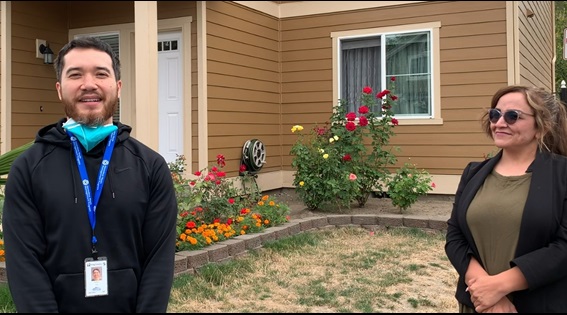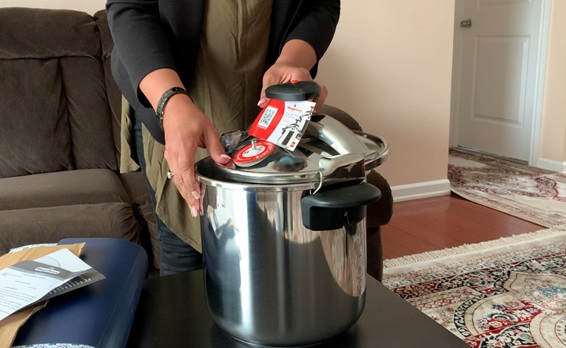
October is filled with fall activities ranging from pumpkin picking to scary movie nights. And right before all the costumes and candy come out for Halloween on October 31, there’s an important observance - National Lead Poisoning Prevention Week (NLPPW), running from October 23-29 this year.
During this week, organizations across the nation bring attention to the dangers of childhood lead exposure. Lead poisoning is 100% preventable, yet it remains a childhood health concern. When young children are exposed to lead, even at low levels, they may experience health effects such as developmental delays, nervous system damage, decreased muscle growth, and other early childhood development issues.
Facts about lead and its human effects - King County
Here’s how the Hazardous Waste Management Program in King County (Haz Waste Program) helps families in King County reduce children’s exposure to lead to prevent its serious health effects.
Identifying families with children who have high levels of lead exposure
During an in-home environmental assessment, different items, materials, and areas of the home are screened for lead using an X-ray fluorescent analyzer (XRF). There are many potential sources of lead including:
- Food preparation items, such as traditional pressure cookers, aluminum cookware, glazed dishes, and silverware brought from outside the U.S.
- Traditional remedies and some Ayurveda medicines
- Cosmetics like surma, kajal, and kohl
- Cosmetic jewelry
- Lead paint and paint dust from homes built before 1978
- Old toys that are painted or made of metal
In-home environmental investigations

Photo caption: Matt Wilson, Haz Waste Program (left) and Nilu Pedram, Afghan Health Initiative (right) get ready to do an in-home environmental assessment in Kent.
Let’s follow Matt Wilson, Health and Environmental Investigator with the Haz Waste Program Residential Services Team, while he conducts an in-home environmental assessment in the city of Kent with a recently resettled Afghan family. Newly arriving immigrant and refugee children are at a higher risk of lead exposure from common household materials brought from their home country, such as cookware and cosmetics.
For this visit, Matt teamed up with Nilu Pedram, a health advocate from community-based organization Afghan Health Initiative (AHI) to provide in-language and culturally appropriate services to the family. Nilu led in-language greetings and introductions. Then, Matt set up two cases in the living room that hold the equipment used to test samples from the home for lead. On this particular visit, Matt used the XRF analyzer to test two cookpots brought from the family’s country of origin that they often used to prepare meals. The XRF results revealed both cookpots were found to contain lead. Matt and Nilu then collaborated to communicate the results to the family, recommending that the family stop using the cookpots.
Public health recommendations to stop using lead-contaminated pots is essential to reducing lead exposure health risks. But it can also create a challenge for immigrant and refugee families who may use these cookpots almost daily. Through direct work conducting hundreds of in-home visits with families each year, the Residential Services and AHI teams discovered that for some families, stopping the use of the lead-contaminated pots isn’t a straightforward switch. Immigrant and refugee families often face access barriers that prevent them from easily purchasing a safer cooking pot. Additionally, traditional pressure cookers and cookware may also have sentimental value to families because they are passed down through generations or given to commemorate a special event. These considerations mean that sometimes families will continue to use lead-contaminated pots despite public health recommendations.
With these lessons in mind, a new service was created to reduce at-home lead exposure – a safer cookware exchange program.
Safer cookware exchange

Photo caption: Nilu unboxes a stainless steel cooking pot, a safer alternative that the family can start using right away to reduce their lead exposure.
A recent study conducted by the Haz Waste Program’s Research Team found that aluminum cookpots and pressure cookers, often brought to the U.S. from Afghanistan, can be a source of lead exposure. The Residential Services and Research teams worked together to identify the best safter alternative for families to replace cookpots and pressure cookers containing lead. Once stainless steel was confirmed as the best replacement cookware, the Residential Services team secured a grant to fund the cookware exchange project to support services for immigrant and refugee families.
Now, when Matt and his team members conduct an in-home environmental assessment and confirm a family is using lead-contaminated cookware, they are able to provide them a stainless steel cookpot alternative – an immediate and effective resource to protect the family from lead exposure.
Larger circle of care
Support for families with children with elevated blood lead levels doesn’t stop after an in-home visit. As part of a model of coordinated, continued care, the Residential Services and AHI teams work together to provide in-language, follow-up information about:
- Recognizing the signs of lead poisoning
- How to prevent future exposures through lead dust cleaning
- Focusing on proper nutrition to keep children healthy
- When to get the child’s blood retested to see if intervention and prevention methods have reduced the child’s elevated blood lead levels.
Steps to protect your family from lead poisoning
Though National Lead Poisoning Prevention Week only comes once a year, families in King County can continue to take simple steps every day to reduce their exposure to lead at home.
- Wash hands and toys with soap and water regularly.
- Use a damp cloth or mop to clean countertops, windowsills, doorways, and floors once a week. This is called damp dusting or damp mopping.
- Leave shoes at the door or wipe them on a doormat before entering your home.
- Eat foods that are rich in calcium, iron, and vitamin C.
- Avoid using imported, decorative, or aluminum cookware and pottery for preparing or serving food. Switching to stainless steel cookware is a safer alternative. If you can’t replace your cookware, follow these tips when using aluminum pots and pressure cookers.
If you believe your child may have been exposed to lead, call your healthcare provider and ask for a blood test. It’s the only way to know for certain. To learn more about lead exposure, visit kingcounty.gov/lead